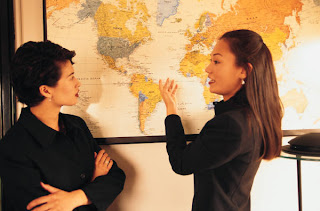Moving from Volunteerism to Social Justice
 by Ann Abbott
by Ann AbbottSpanish instructors always face a classroom with students of varying levels of Spanish proficiency. It's a difficult challenge, but one we are used to. In a Spanish community service learning (CSL) course, I have recently realized that we face a classroom of students with varying levels of politicization and social engagement. That's not necessarily a more difficult challenge, but it is one that I think fewer of us have thought about and how it our teaching should meet that challenge.
I have posted before about class activities that can help students distinguish between volunteerism and engaged citizenship--speaking at a School Board budget meeting and writing to our elected officials--, and Actividad 18-2 in Comunidades
Now that we're towards the end of the semester, you might consider trying this simple yet challenging activity with your CSL students:
- Social injustice. Each student writes down a specific example of a social injustice that he/she has observed or learned about through his/her CSL work this semester. Example: The grade school that I attended was in an affluent community. We had nice facilities, plenty of materials, fewer kids in each class and more after-school activities. When I go to work at this school, I see that there are leaks in the ceilings and peeling walls, there are few computers in the library and if I weren't in the classroom, one adult would be responsible for a class of 30 students.
- Socio-political issues. Pass your example to a classmate. Your classmate reads the specific example and names a larger socio-political issue that it is connected to. Example: Inequities in education. Education tied to property taxes.
- Social justice. Pass the paper to another classmate. Your classmate reads items #1 and #2 and then writes at least one way that our society could work to achieve social justice on this issue. Example: Implement a different or diversified funding source for all schools.



Comments
Post a Comment